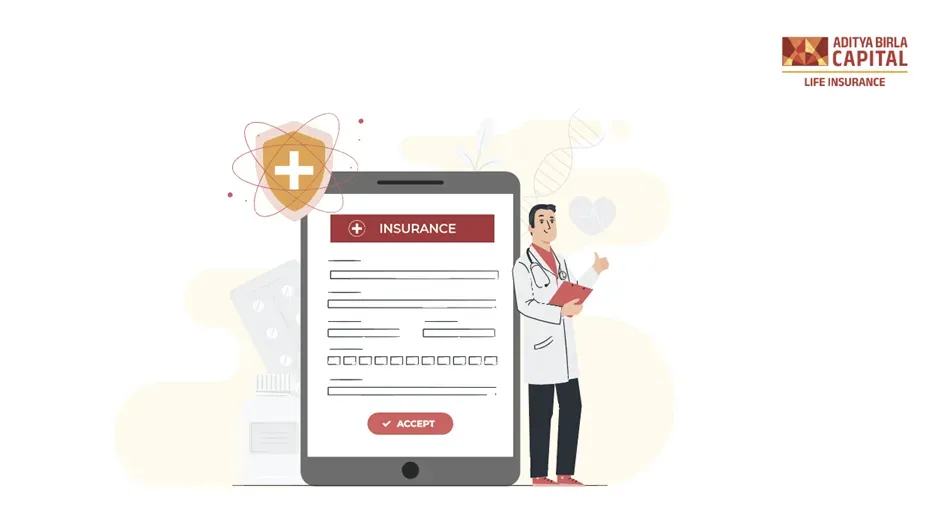Life insurance can, at times, feel like you're swimming through a wilderness of jargon and medical tests. Just picture Anil—he’s recently dived into the world of life insurance, just to end up lost in a labyrinth of clinical tests. He’s scratching his head, wondering why he needs everything from blood tests to ECGs. “Why so many tests? What do they truly affect my coverage?” he asks himself, feeling like he’s missing a crucial piece of the puzzle.
So, what’s the deal with these medical evaluations for a life insurance policy anyway?
Basically, they’re designed to give the insurance company a full image of your well-being. This helps them figure out how risky you are to insure, which in turn influences your premiums and coverage.
In this article, we’ll walk you through the entire medical evaluation process for a life insurance policy. We’ll break it down into manageable steps and explain what happens after you’ve completed the testing.
So, let’s start!
What Is A Medical Test For Life Insurance?
When you apply for life insurance, the company might ask you to do a medical test. Think of it like a quick health check-up to see where you stand. The results give them an idea of your health, which helps them figure out if they’ll approve your policy, how much coverage you can get, and what your premiums will look like.
Life insurance medical tests usually involve filling out a health questionnaire and taking physical measurements like height, weight, and blood pressure, along with blood tests and other diagnostic screenings—all equipped towards getting an unmistakable image of your general well-being.
Confused about the medical steps in life insurance? Check out our quick guide to the stages that turn your health information into coverage details!
Stages Of Life Insurance Medical Evaluation
Step 1: Complete The Medical Questionnaire
When applying for life insurance, you'll need to fill out a detailed questionnaire about your medical history, lifestyle, and any current health issues. The underwriters will go over this with you, so it's important to be honest. If you don’t disclose everything or misrepresent details, your policy could be denied or cancelled later.
Step 2: Undergo The Medical Examination
Based on the details from your application and questionnaire, the insurance company might ask for a medical exam. A medical examination could consist of the following -
- Physical evaluations (weight, height, blood pressure)
- Blood tests (blood sugar, cholesterol, etc.)
- Urine test
- Electrocardiogram (ECG)
- Any additional tests as needed
Step 3: Processing Of Medical Results
The insurance company will take a few days to go over your medical exam results. They’ll pay close attention to important health indicators that might affect your life expectancy.
Step 4: Medical Underwriting Assessment
The insurance company's underwriters will look over your medical information and assess your overall health risk. They’ll also consider things like your age, health history, family background, lifestyle, and the kind of coverage you’re after.
So, you’ve finished your medical test for life insurance—what’s next? Here’s an overview of what to anticipate!
What Happens After You Under The Medical Test For Life Insurance?
Once the medical test is completed, the insurance company will review the results to decide on your eligibility for coverage, the premium amount, and other details.
Here’s what will happen after the completion of your medical test-
-
Underwriting Decision
After reviewing the underwriting results, the insurance company will determine your eligibility for coverage and place you into a risk category. This classification affects your premium rates, with healthier individuals typically enjoying lower premiums.
-
Possible Follow-Up
If any test results are concerning, the insurer might ask for further tests or follow-up exams to get a clearer picture of your health.
-
Policy Decision
The insurer will then decide whether to approve or decline your application. If approved, you'll receive your policy documents, which outline the coverage terms, premiums, and other details. However, if the test results indicate a serious health issue, the insurer might either reject your application or offer coverage at a higher premium to reflect the increased risk, taking other factors into account.
Summing Up!
Wrapping up a medical test for a life insurance policy can feel like a major obstacle, yet it's a step toward ensuring you and your family are covered. By getting to know the process- from filling out the questionnaire to awaiting the final decision- you’ll be in a better spot to tackle it confidently. The goal here is simple: to get a policy that meets your requirements and keeps your loved one’s future secure.
Embrace the process—your future self will thank you!










